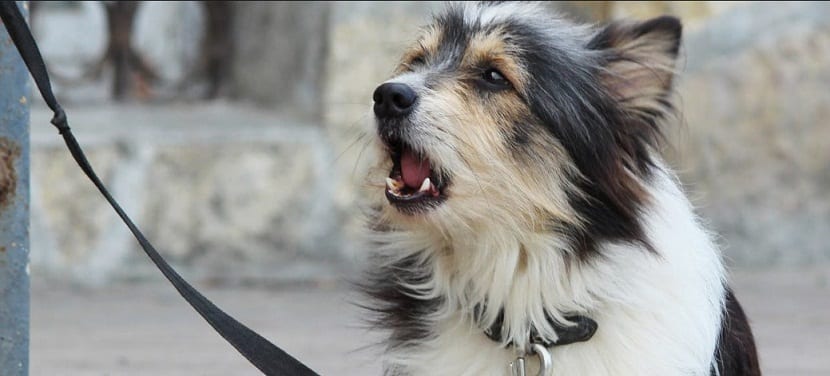
The barking cough also called laryngotracheitis or as we better know it, kennel cough is a pathology that is viral in nature, which is very easily spread, which also has the habit of appearing because of the Parainfluenza virus or also because of the type two dog adenovirus, which are agents that make the respiratory tract weak and result in it being easy entry of bacteria that are opportunistic such as Bordetella Bronchiceptica, causing an infection that is bacterial and making the clinical condition of our dog serious.
Thus, we can see how this pathology directly affects the respiratory system, causing in it an inflammation that can become more or less serious, taking into account the agents that may act, the conditions that are external as well as the contagion time that the dog takes.
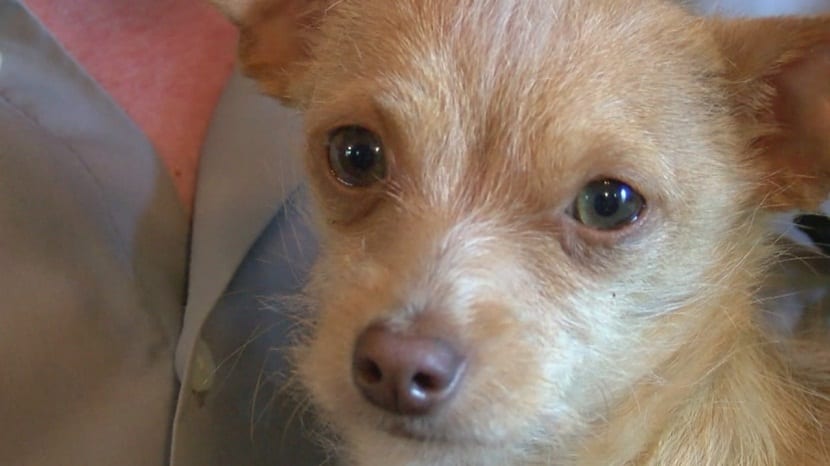
We can say that laryngotracheitis is very similar to the flu that occurs in humans. By this we mean an infection that is becoming more common in dogs, It is not serious and can be eliminated with a fairly simple medical treatment, this being an upper respiratory tract disease caused by a canine adenovirus type 2 (CAV 2), often associated with Parainfluenzae 2, Herpesvirus and Reovirus, or even bacterial germs.
Causes of kennel cough or laryngotracheitis
The most common is that kennel cough has its development somewhere where a large number of dogs can live. It is in these cases, it would be necessary to maintain a control in this disease, since it is usually complicated if we refer to a case that is particular or isolated.
In the same way that it happens with the flu, this is a pathology that it is spread orally as well as nasal.
By the time the dog has been infected, these viral agents can be transmitted to another dog during the first two weeks and if this is in a kennel.
This transmission can be extended for about three months. In this way, at the moment that the patient who is ill releases pathogenic germs through each of the respiratory secretions, another who is healthy who comes close to it has the possibility to receive them and begin to develop the disease.
Puppies that are less than six months old are much more likely to suffer from this disease. Especially, if we adopt a dog that has been exposed to these kinds of circumstances of great importance of stressAs it is to be inside a cage, it is important that we take care above all and see carefully if there is the presence of some of the symptoms that we are going to explain.
In kennels, kennels, animal shelters, shelters where many dogs are, among others, it can become almost impossible to prevent this infection from spreading with great speed. It is for this reason that prevention at all times is the solution.
Symptoms of barking cough or laryngotracheitis
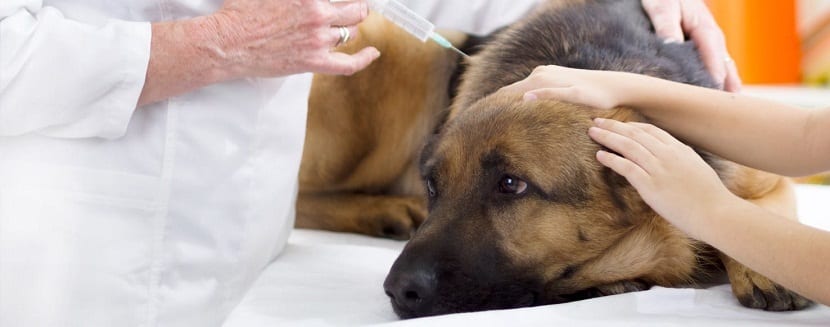
When the dog is infected, we will observe that begins to have certain symptoms that can be clearly identified.
The most notable sign of this pathology is the presence of dry cough, in turn snores, with great force as well as constant, which is caused by inflamed vocal cords.
It is in these advanced cases, when the cough may be in the company of a coughing up secretions that is light, in turn are deposited in the respiratory system due to each of the pathogens. This release can usually be mistaken for mild vomiting or also for the presence of a foreign body.
If there is a possibility, It is recommended that we reserve a sample to be able to take it to the vet as soon as possible so that she can be examined. In this way, apart from carrying out the analysis of the physical appearance of our dog, a study of the secretion released can be made and a more indicated diagnosis can be made.
It is important to note that these moderate vomiting are not caused by stomach problemsWe must remember that this disease only causes effects on the respiratory system. Its development is due to inflammation as well as the irritation that occurs in the throat caused by the cough that is dry.
Decay as well as general malaise, loss of appetite as well as lack of energy are part of the symptoms of kennel cough with more frenquency. If we see that our dog has any of these signs, we should have no doubts and we have to go to a veterinarian as soon as possible.
Although it is not a serious disease, nevertheless a treatment prescribed by the veterinarian is needed so that it can be cured as well as to prevent it from evolving into a greater problem.
Dogs that are from kennels, kennels or in their difference from pet stores, are exposed to high stress conditions, it is most likely that kennel cough is derived from pneumonia.
Treatment for barking cough or laryngotracheitis
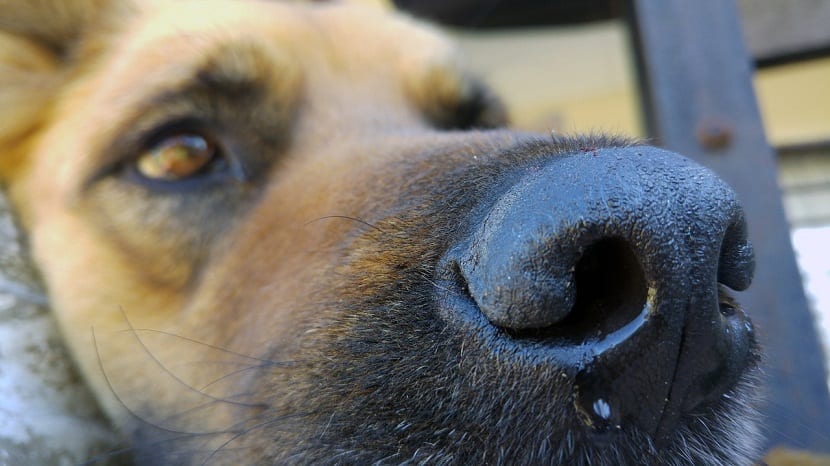
In those cases that are particular, the main thing to do is place the dog in isolation that he is ill within our home, in a room that is only for him for at least seven days or as long as necessary for treatment.
This is a very important step to be able to prevent the disease from spreading as well as not to infect other dogs.
When the dog is already isolated, the easiest way to maintain control as well as to eliminate kennel cough is through antibiotics, as well as anti-inflammatories. Taking into account what is the state of our dog as well as the advancement of said disease, the vet must make the decision to prescribe any medicationSince certain viral agents may intervene in the development of this disease, we can say that it is practically impossible to clearly know what the standard medical treatment is for each case.
What is recommended is take our dog to a veterinary clinic so that the expert is the one who can determine the indicated treatment to cure barking cough.
In those dogs that there is the presence of decay as well as the lack of appetite, it is important that we can ensure that they consume the minimum amount of water that is stipulated by the specialist, in order to do so. prevent dehydration from occurring in our dog, as well as to be able to dilute each one of the secretions that are deposited in the respiratory tract as well as to be able to favor ventilation.
There is a vaccine that is designed to protect our dog from this disease. But nevertheless, this is a vaccine that is not available for all countries and it is for this reason that we cannot always prevent this disease.
Medical significance of laryngotracheitis
- Very contagious respiratory disease of dogs.
- Dogs generally they recover after a few days or weeks.
- Cooperation between several pathogens, bacterial or viral (multifactorial disease):
- Bordetella bronchiseptica (bacteria)
- Attacks the eyelashes of the trachea and bronchi
- Canine caninfluenza virus (CIPF)
- Often isolated.
- It affects only the surface of the respiratory tract epithelium (nasal cavities, larynx, trachea, bronchi, bronchioles) and the peribronchial lymph nodes.
- The infection produces viral particles in the form of aerosols that spread rapidly from dog to dog.
- Experimentally infected dogs with mild symptoms, which is in contrast to a natural infection.
- In association with B. bronchiseptica or mycoplasmas, a typical kennel cough is observed.
- Even without clinical signs, pathological lesions are still identified, particularly a tracheobronchitis that persists for about 2 weeks.
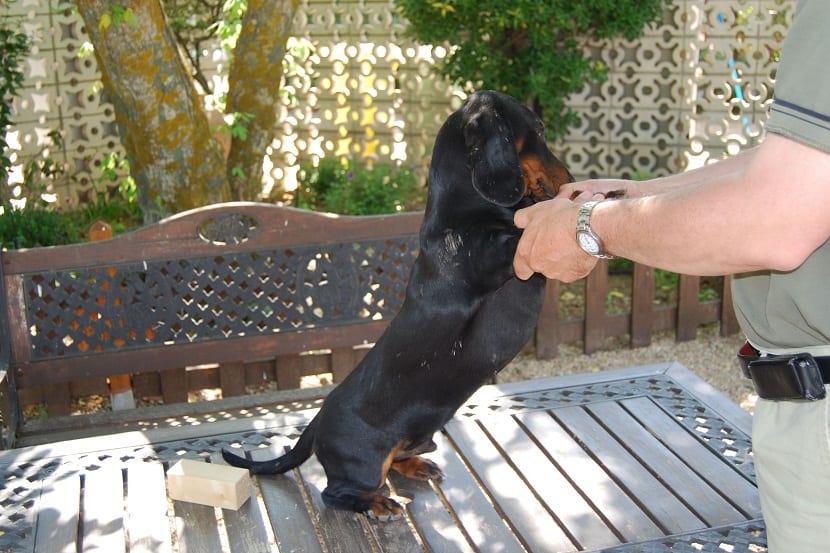
- Neutralizing antibodies appear much later (at least 10 days after infection) and peak titers are reached after 3-4 weeks.
- The virus can usually be isolated from the pharynx after 8-9 days or until antibodies are detectable.
- The virus does not appear to persist in dogs.
- Seen in dogs that have a lack of immunity to CAV-1.
- It appears in unvaccinated dogs and puppies they have lost the protection of maternal antibodies.
- Isolated from the respiratory tract of dogs.
- The virus persists for a long time (several weeks).
- Severe tracheobronchitis when combined with mycoplasma and B. bronchiseptica.
- Growth in the respiratory tract and presumably in the intestinal tract.
- Excreted with respiratory secretions and also found in feces.
- Antibodies appear earlier than for CPIV.
- The virus was isolated from throat swabs 8-9 days after infection. Later, the virus remains hidden in cells without possible cleaning.
- It is usually found more in unvaccinated dogs than in older dogs with a history of canine hepatitis vaccination.
Hello, my question if this always happens to a French bulldog?